How to meditate for creativity offers a transformative approach to unlocking the depths of your imaginative mind. By incorporating mindful practices into your routine, you can stimulate innovative thinking, overcome mental barriers, and deepen your artistic expression. This guide delves into effective meditation techniques, ideal environments, and strategies to seamlessly integrate creative meditation into daily life, paving the way for a more inspired and productive creative journey.
Exploring the connection between meditation and creativity reveals a rich history of artists and thinkers harnessing inner calm to foster original ideas. From visualization methods to sensory awareness, this comprehensive overview provides practical tools to elevate your creative process through mindful reflection and focused mental clarity.
Introduction to Meditation for Creativity
Meditation is a time-honored practice that involves focusing the mind and cultivating a state of mental clarity and emotional calm. Over centuries, various cultures and traditions have recognized meditation not only as a spiritual tool but also as a means to unlock inner potential. In recent times, the connection between meditation and creativity has gained significant attention among artists, writers, and innovators seeking to enhance their mental agility and idea generation.
Engaging in meditation can profoundly influence creative processes by fostering enhanced focus, reducing mental clutter, and stimulating divergent thinking. When practiced regularly, meditation helps individuals access a deeper state of consciousness, where innovative ideas can flourish unimpeded by stress or external distractions. Many renowned creators have incorporated meditation into their routines to sustain their inspiration and develop novel perspectives.
Historical Examples of Creative Individuals Using Meditation Techniques
Throughout history, numerous influential figures have turned to meditation as a vital part of their creative journey. For instance, the legendary composer Ludwig van Beethoven was known to practice a form of meditative contemplation that helped him focus intensely on his compositions. Similarly, the visionary scientist and inventor Nikola Tesla engaged in mental visualization and meditative practices to unlock new ideas and scientific insights.
In the realm of philosophy and art, the poet and novelist Khalil Gibran emphasized meditation as a means to deepen his inner understanding and fuel his creative writing. Contemporary artists such as Steve Jobs have publicly spoken about how meditation sessions contributed to their capacity for innovation and problem-solving by clearing mental pathways and fostering intuitive insights.
Benefits of Integrating Meditation into Creative Routines
Incorporating meditation into daily creative routines can offer multiple advantages that directly impact the quality and quantity of ideas generated. These benefits include heightened concentration, enhanced emotional resilience, and a greater capacity for original thinking. Meditation also helps in overcoming mental blocks by creating a calm mental state conducive to free-flowing ideas.
Furthermore, regular practice can improve overall mental health, reducing anxiety and fostering a positive mindset essential for creative risk-taking. The practice encourages mindfulness, which allows individuals to observe their thoughts without judgment, thereby enabling a more open and flexible approach to problem-solving and artistic expression. By establishing a meditation habit, creators can cultivate a mental environment where inspiration is more accessible, and innovative breakthroughs are more likely to occur.
Setting Up a Meditation Space Focused on Creativity
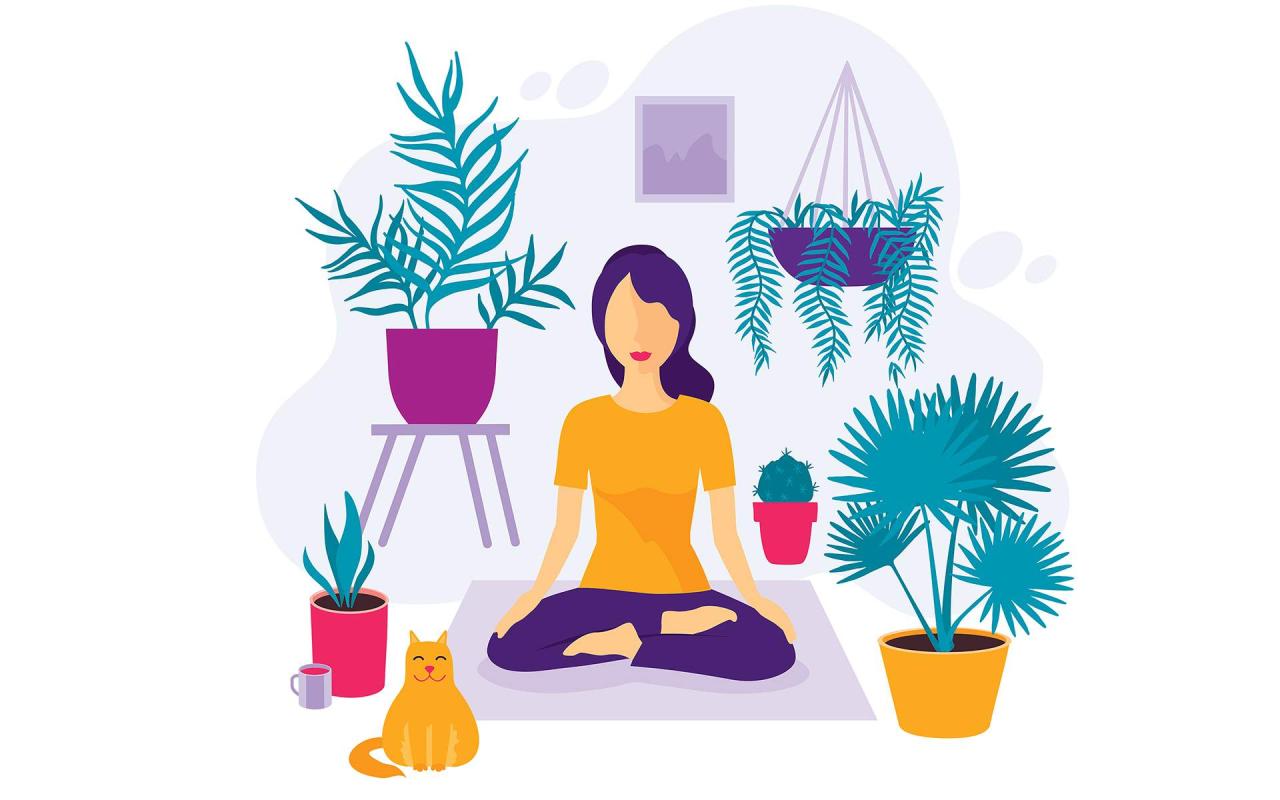
Creating an environment conducive to creative meditation enhances the depth and effectiveness of your practice. A dedicated space helps to cultivate a mindset of openness, inspiration, and calm, allowing your mind to explore new ideas and perspectives more freely. Setting up such an area involves thoughtful consideration of lighting, ambiance, and the presence of inspiring objects that evoke creativity and focus.
Designing a space tailored for creative meditation involves balancing sensory elements to foster both relaxation and inspiration. An environment that appeals visually and atmospherically encourages consistent practice and helps to anchor your creative intentions during each session.
Organizing a Dedicated Creative Meditation Area
Establishing a specific area solely for creative meditation minimizes distractions and signals your mind to enter a state of focused introspection. Select a quiet corner or room where external noise is minimized and stability is maintained. Ensure the space is large enough to comfortably sit or lie down without feeling confined, allowing for natural movement and expression.
Arrange the space with minimal clutter, keeping only essential tools and inspiring objects within reach. Incorporate a comfortable seating arrangement—such as a cushion, meditation chair, or floor mat—that supports a relaxed posture conducive to prolonged meditation sessions. Consider adding a small table or shelf nearby to hold objects that invigorate your creative energy.
Elements to Foster Creativity in Your Meditation Space
Thoughtful inclusion of elements that stimulate creativity can significantly enhance your practice. Proper lighting, ambiance, and tools contribute to an environment that nurtures imaginative thinking and emotional openness.
Lighting should be soft and adjustable, ideally natural, to promote relaxation and focus. Use warm, indirect lighting such as table lamps with dimmers or candles to create a calming atmosphere. Avoid harsh fluorescent lights that can induce stress or distractiveness.
Ambiance plays a crucial role in setting your mood; incorporate calming scents like lavender, sandalwood, or frankincense using diffusers or candles. Gentle background music or nature sounds can also augment the environment, helping to drown out external noise and deepen concentration.
Incorporate tools that inspire and activate your creative energies, such as sketchbooks, colorful pens, or mood boards. Art supplies, interesting objects, or photographs that evoke positive emotions and ideas can serve as focal points during meditation, helping to stimulate imagery and inventive thought processes.
“An environment that combines tranquility with inspiration empowers your mind to explore new creative horizons during meditation.”
Inspiring Objects and Artwork for Your Creative Space
Adding inspiring objects and artwork transforms your meditation area into a sanctuary of creativity. Select pieces that resonate with your personal aspirations and artistic interests, encouraging reflection and imaginative exploration.
Consider displaying artwork that sparks curiosity or evokes strong emotional responses. Abstract paintings, photographs of nature, or symbolic sculptures can serve as visual prompts for your subconscious to generate innovative ideas. Incorporate objects that have personal significance or cultural meaning, such as artifacts, handcrafted items, or meaningful symbols, to deepen your connection to your creative intentions.
Rotating these objects periodically keeps the environment fresh and stimulates your mind with new visual stimuli. Ensuring that these elements are thoughtfully arranged and harmonize with the overall ambiance creates an inspiring and peaceful setting conducive to creative meditation.
Techniques of Meditation to Boost Creativity
Engaging in specific meditation techniques can significantly enhance creative thinking by calming the mind, unlocking subconscious ideas, and fostering mental clarity. By adopting targeted practices, individuals can cultivate a mental environment conducive to spontaneous insights and innovative solutions.
Below are several effective meditation approaches designed to stimulate creativity, each with unique benefits and application methods. Practicing these techniques regularly can lead to a marked increase in creative productivity and idea generation.
Mindfulness Meditation for Unlocking Creativity
Mindfulness meditation involves paying deliberate attention to the present moment without judgment. It helps in reducing mental clutter, enhancing focus, and fostering a receptive state for creative ideas to surface.
- Find a comfortable seated position in a quiet space, ensuring your back is straight but relaxed.
- Close your eyes gently or soften your gaze, directing your attention to your breath.
- Take slow, deep breaths, noticing the sensation of air entering and leaving your nostrils or the rise and fall of your chest.
- If your mind drifts to thoughts or distractions, acknowledge them without judgment and gently redirect your focus back to your breath.
- Continue this practice for 10-20 minutes, gradually increasing duration as comfort develops.
This practice helps quiet the mental chatter and opens space for intuitive insights, fostering a fertile environment for creative thoughts to flourish.
Visualization Techniques to Stimulate Creative Thinking
Visualization exercises utilize mental imagery to promote innovative thinking and idea generation. By vividly imagining scenarios, objects, or abstract concepts, individuals activate neural pathways associated with creativity and problem-solving.
- Begin by adopting a comfortable, relaxed posture, with eyes closed or softly focused on a point ahead.
- Take several deep breaths to center yourself, grounding your attention in the present.
- Form a clear mental image related to your creative goal—such as visualizing a successful project, imagining new ideas flowing freely, or picturing yourself overcoming creative blocks.
- Enhance the imagery by engaging all senses—imagine colors, textures, sounds, and even smells associated with your visualization.
- Maintain this vivid image for 5-10 minutes, allowing insights and inspirations to emerge naturally.
This method stimulates the brain’s associative networks, fostering novel connections and encouraging innovative thinking beyond conventional boundaries.
Focused Breathing Exercises to Clear Mental Blocks
Focused breathing exercises serve as an effective way to clear mental blocks and reset cognitive processes, enabling fresh perspectives and creative flow.
- Sit comfortably with your back straight and shoulders relaxed.
- Inhale slowly through your nose for a count of four, filling your lungs fully.
- Hold your breath briefly for a count of four.
- Exhale slowly through your mouth or nose for a count of four, releasing tension and mental clutter.
- Pause briefly before the next inhale, repeating the cycle for 5-10 minutes.
“Controlled breathing not only calms the nervous system but also enhances mental clarity, making space for creative ideas to surface more effortlessly.”
This practice reduces stress, sharpens focus, and helps dispel mental fog, thus unleashing creative potential.
Comparison Table of Meditation Techniques and Their Creative Benefits
| Technique | Primary Focus | Creative Benefits | Ideal Duration |
|---|---|---|---|
| Mindfulness Meditation | Present moment awareness | Enhances focus, reduces mental clutter, fosters intuitive insights | 10-20 minutes daily |
| Visualization | Imagining vivid scenarios | Stimulates neural connections, promotes innovative thinking, idea generation | 5-10 minutes per session |
| Focused Breathing | Regulating breath to clear mental blocks | Reduces stress, improves mental clarity, resets cognitive pathways | 5-10 minutes per session |
| Body Scan Meditation | Physical awareness and relaxation | Relieves tension, enhances bodily awareness, unlocks subconscious creativity | 15-20 minutes |
Incorporating Creative Meditation into Daily Practice
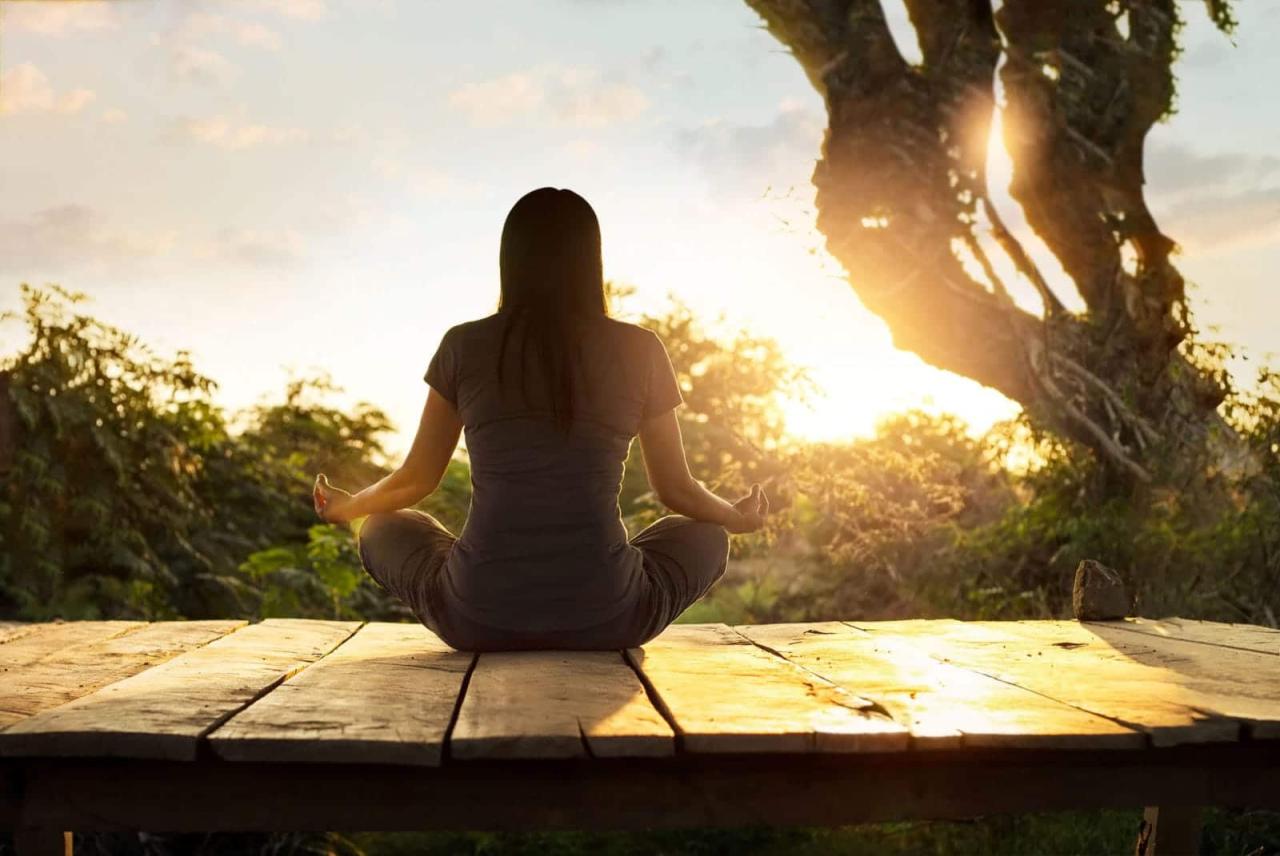
Embedding meditation into daily routines enhances creative capacity by fostering consistent mental clarity, openness, and innovation. Establishing a dedicated time and space each day for meditation creates a structured environment conducive to sustained creative growth. When practiced regularly, meditation becomes an integral part of a creative mindset, enabling individuals to access inspiration more readily and maintain a state of mental freshness that supports artistic and cognitive pursuits.Consistency in practice helps solidify the calming and focusing effects of meditation, allowing creative ideas to flow more freely.
Integrating meditation with creative activities—such as drawing, writing, or brainstorming—further amplifies its benefits, making the transition into creative states smoother and more natural. By systematically incorporating these routines, individuals can cultivate an enduring habit that nurtures their innate creativity and enhances productivity over time.
Establishing a Daily Schedule for Creative Meditation
Designing a practical daily schedule for meditation rooted in creative growth involves selecting specific times that align with personal rhythms and peak mental alertness. Typically, early morning sessions offer fresh perspectives and a quiet environment, setting a positive tone for the day. Alternatively, a mid-afternoon break can rejuvenate the mind and foster new ideas. A recommended routine includes:
- 10-minute morning meditation sessions to clear the mind upon waking.
- 20-minute dedicated creative meditation, focusing on visualization or free-flowing thoughts, preferably before engaging in creative work.
- 5 to 10-minute mindfulness pauses during the day to maintain mental clarity and openness.
- Evening reflection meditation to review insights, inspirations, and creative breakthroughs experienced during the day.
Maintaining a journal to log daily meditation sessions and creative outputs helps reinforce the habit and track progress. Consistency is key; aim to meditate at the same times each day to develop a sustainable routine that becomes second nature.
Combining Meditation with Creative Activities
Integrating meditation directly into creative activities allows for a seamless transition into a focused, inspired state. This approach involves merging mindfulness or visualization techniques with the act of creating, thereby deepening engagement and unlocking innovative ideas.Effective methods include:
- Beginning a drawing or writing session with a short meditation focused on clearing mental clutter and inviting inspiration.
- Engaging in mindful awareness during the activity itself—paying close attention to the sensations of pen on paper or the flow of thoughts without judgment.
- Using visualization techniques before starting a project, imagining the final outcome vividly to stimulate creative pathways.
- Practicing a brief breathing exercise or body scan to relax the mind and body, making it easier to access a state of flow.
Preparing the Mind for Innovative Thinking
A structured pre-creative routine primes the mind by establishing an optimal mental state for innovation. Before diving into creative work, engaging in specific meditation practices can loosen mental constraints and stimulate novel ideas.Recommended routines to prepare the mind include:
- Engaging in a brief open-awareness meditation to observe thoughts and feelings without attachment, creating mental space for new insights.
- Practicing focused visualization, imagining oneself exploring new ideas or solving complex problems vividly and confidently.
- Using affirmation-based meditations that reinforce confidence in one’s creative abilities and openness to inspiration.
- Incorporating gentle mindful breathing to reduce stress and anxiety, which often block creative flow.
Overcoming Challenges in Meditation for Creativity
Meditating to enhance creativity can be immensely rewarding, but practitioners often encounter specific obstacles that hinder progress. Recognizing and addressing these challenges is essential to maintain a consistent and effective practice. This section explores common difficulties such as mental distractions and impatience, offers practical strategies to sustain focus, and provides insights into customizing meditation techniques to suit individual creative needs.
By overcoming these hurdles, practitioners can foster a more enriching and inspiring meditation experience that continually nurtures their creative potential.
Many individuals find their meditation journey interrupted by mental distractions, restless thoughts, or impatience for immediate results. These challenges can diminish motivation and reduce the effectiveness of meditation as a tool for boosting creativity. Understanding the root causes and implementing targeted strategies can help maintain momentum and deepen one’s practice, ultimately leading to more innovative and inspired outcomes.
Mental Distractions and Restlessness
Mental distractions are among the most common barriers faced during meditation. An active mind filled with worries, to-do lists, or unrelated thoughts can divert focus and diminish the meditative state. Restlessness may also manifest as physical fidgeting, impatience, or a desire to speed up the process of gaining creative insights.
- Develop a gentle acceptance of distractions: Acknowledge distracting thoughts without judgment and gently redirect attention back to the chosen point of focus, such as breath or a visual image. This practice enhances concentration and reduces frustration.
- Use grounding techniques: Incorporate body scans or progressive muscle relaxation to anchor awareness in the present moment, calming an agitated mind and reducing physical restlessness.
- Limit external stimuli: Choose a quiet, clutter-free environment for meditation, minimizing interruptions and sensory overload that can cause distraction.
Strategies to Maintain Consistency and Focus
Consistency is vital for reaping the creative benefits of meditation. However, maintaining regularity can be challenging, especially when motivation wanes or life becomes busy. Implementing practical strategies can foster a sustainable practice and enhance focus during sessions.
- Establish a routine: Meditate at the same time each day, creating a habit that aligns with daily schedules. Morning sessions often promote fresh, undistracted mental states conducive to creativity.
- Set realistic goals: Begin with short sessions, such as five to ten minutes, and gradually increase duration as comfort and focus improve. Recognizing progress reinforces motivation.
- Use guided meditations: Leverage audio recordings focused on creativity or mindfulness to provide structure and support, especially during challenging periods.
- Track progress and celebrate milestones: Keep a meditation journal to record experiences, insights, and improvements, fostering a sense of achievement and motivation.
Adapting Meditation Practices to Individual Creative Needs
Every individual possesses unique creative inclinations and challenges. Tailoring meditation techniques to personal preferences can significantly enhance engagement and outcomes. Recognizing what resonates most effectively ensures sustained interest and deeper exploration of creative potentials.
- Incorporate visualization techniques: Use guided imagery related to specific creative projects or themes, such as imagining a successful painting or writing scene, to stimulate inspiration during meditation.
- Utilize mantra or affirmation-based meditation: Repeat affirmations like “Creativity flows effortlessly” to reinforce a creative mindset and overcome mental blocks.
- Practice movement-based meditation: Engage in mindful walking, dance, or other gentle movements that align with kinesthetic creative processes, fostering physical and mental openness.
- Blend meditation with creative activities: Combine brief periods of quiet meditation with sketching, journaling, or brainstorming sessions to integrate mindfulness directly into creative workflows.
Tips for Staying Motivated and Inspired
Sustaining motivation to meditate regularly for creativity can be challenging, particularly when immediate results are not evident. Cultivating inspiration and a positive outlook helps maintain enthusiasm and deepens commitment to the practice.
- Connect with a community: Join meditation groups or creative circles that share similar goals, fostering accountability and shared inspiration.
- Reflect on past insights: Review creative breakthroughs or moments of clarity achieved during meditation to reinforce its value and motivate continued effort.
- Set inspiring intentions: Clarify specific creative goals or projects before each session to create purpose and direction, enhancing engagement.
- Seek varied practices: Experiment with different meditation styles and incorporate new techniques to keep the practice fresh and stimulating for your creative mind.
Examples and Methods to Enhance Creativity Through Meditation
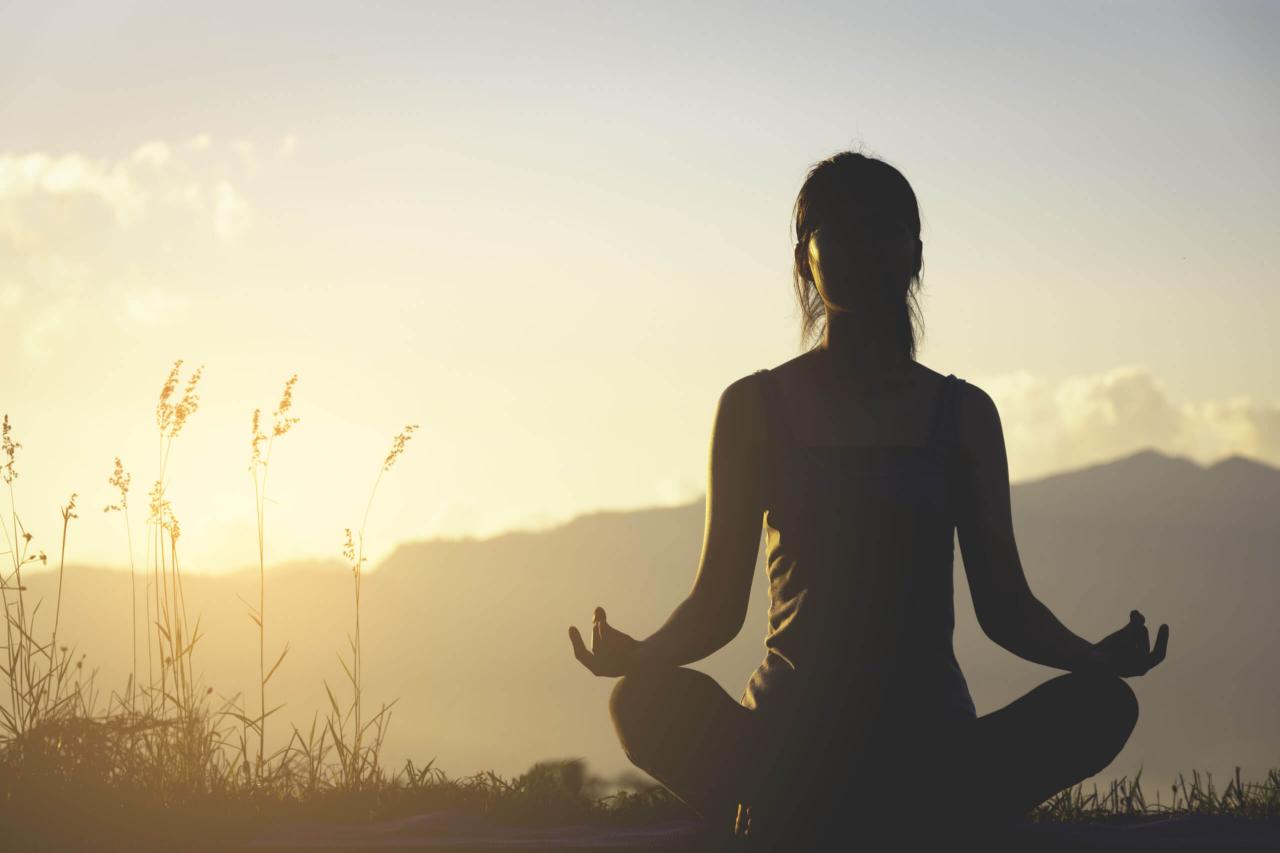
Engaging in specific meditation exercises and adopting targeted methods can significantly foster creative thinking and generate new ideas. These practices help quiet the mind, stimulate innovative pathways, and open consciousness to novel insights, making them invaluable tools for artists, writers, entrepreneurs, and anyone seeking to enhance their creative capacity through meditation.
By integrating these techniques into regular practice, individuals can unlock deeper levels of inspiration, break through mental blocks, and cultivate a mindset receptive to creative breakthroughs. The following examples and methods provide practical approaches to harness meditation for heightened creativity.
Specific Meditation Exercises Designed to Spark New Ideas
These exercises are curated to stimulate the subconscious mind, encourage free association, and inspire innovative thought processes:
- Visualization for Creative Inspiration: Sit comfortably and visualize a vivid image related to a project or idea you wish to develop. Focus on sensory details—colors, sounds, textures—to deepen engagement and allow new insights to surface.
- Guided Imagery Meditation: Use a recorded meditation that guides you through a journey—such as exploring an imaginary landscape—that can evoke symbolic imagery linked to your creative pursuits.
- Open Monitoring Meditation: Practice non-judgmental awareness of all thoughts that arise, allowing your mind to wander freely. This openness can reveal hidden connections and novel ideas.
- Mantra Meditation with a Creative Focus: Repeating a mantra related to creativity or innovation can embed a mindset of openness and foster a flow of ideas during and after meditation sessions.
- Breath-Counting for Insight: Focus on counting breaths to quiet the mind, creating mental space where spontaneous ideas are more likely to emerge.
Methods to Cultivate a Mindset Open to Creative Insights
Fostering an internal environment receptive to inspiration involves intentional mental and emotional cultivation:
- Adopt a Curious Attitude: Approach meditation sessions with curiosity about what insights may arise, rather than expecting specific outcomes. This openness encourages spontaneous creative thoughts.
- Practice Non-Attachment to Results: Let go of the need to control or judge ideas during meditation. Allowing thoughts to flow freely enhances divergent thinking, which is essential for creativity.
- Set Creative Intentions: Begin each session with a gentle affirmation or intention, such as “I am receptive to new ideas,” to direct focus toward innovation and discovery.
- Use Affirmations: Incorporate positive affirmations related to creativity during meditation, reinforcing a mindset that values and welcomes original thinking.
- Maintain a Regular Practice Schedule: Consistency over time helps solidify the neural pathways associated with creative openness, making insights more accessible.
Techniques for Integrating Meditation with Brainstorming Sessions
Combining meditation with active idea generation enhances the quality and quantity of creative output:
- Pre-Brainstorming Meditation: Begin with a short meditation to clear mental clutter and prime the mind for innovative thinking. A 5-10 minute focused breathing session often suffices.
- Silent Reflection Post-Meditation: After meditation, allocate time for spontaneous writing or sketching ideas that spontaneously surface during the relaxed state.
- Guided Creative Meditation: Use a meditation that explicitly focuses on generating ideas, such as imagining a problem from multiple perspectives, to stimulate diverse solutions.
- Scheduled Meditation Breaks during Brainstorming: Incorporate brief meditation pauses within longer brainstorming sessions to reset mental pathways and foster fresh perspectives.
- Use Visualization Techniques During Brainstorming: Visualize solutions or new concepts vividly during meditation to deepen insights and spark additional ideas when returning to active thinking.
Incorporating Sensory Awareness to Boost Creative Thinking
Engaging the senses during meditation can amplify creative potential by grounding thoughts in sensory experiences and fostering a richer internal landscape:
- Sensorial Focus Exercises: Direct attention to specific sensory inputs—such as the texture of an object, the aroma of essential oils, or the sounds in your environment—to stimulate neural pathways associated with creativity.
- Multi-Sensory Visualization: While visualizing, incorporate sounds, smells, and tactile sensations to create immersive mental scenarios that inspire novel ideas.
- Use of Aromatherapy: Diffuse scents like lavender, rosemary, or citrus during meditation to evoke emotional states conducive to creative thinking.
- Touch and Movement Integration: Incorporate gentle hand movements or tactile objects during meditation to activate sensory channels linked to creative inspiration.
- Mindful Eating or Drinking: Engage in mindful consumption of tea or snacks during meditation to heighten sensory awareness, fostering a deeper connection with the present moment and sparking creative associations.
Implementing these methods allows for a more dynamic and sensory-rich meditation practice, enhancing the ability to generate unique ideas and develop innovative solutions.
Structuring Creative Insights Post-Meditation
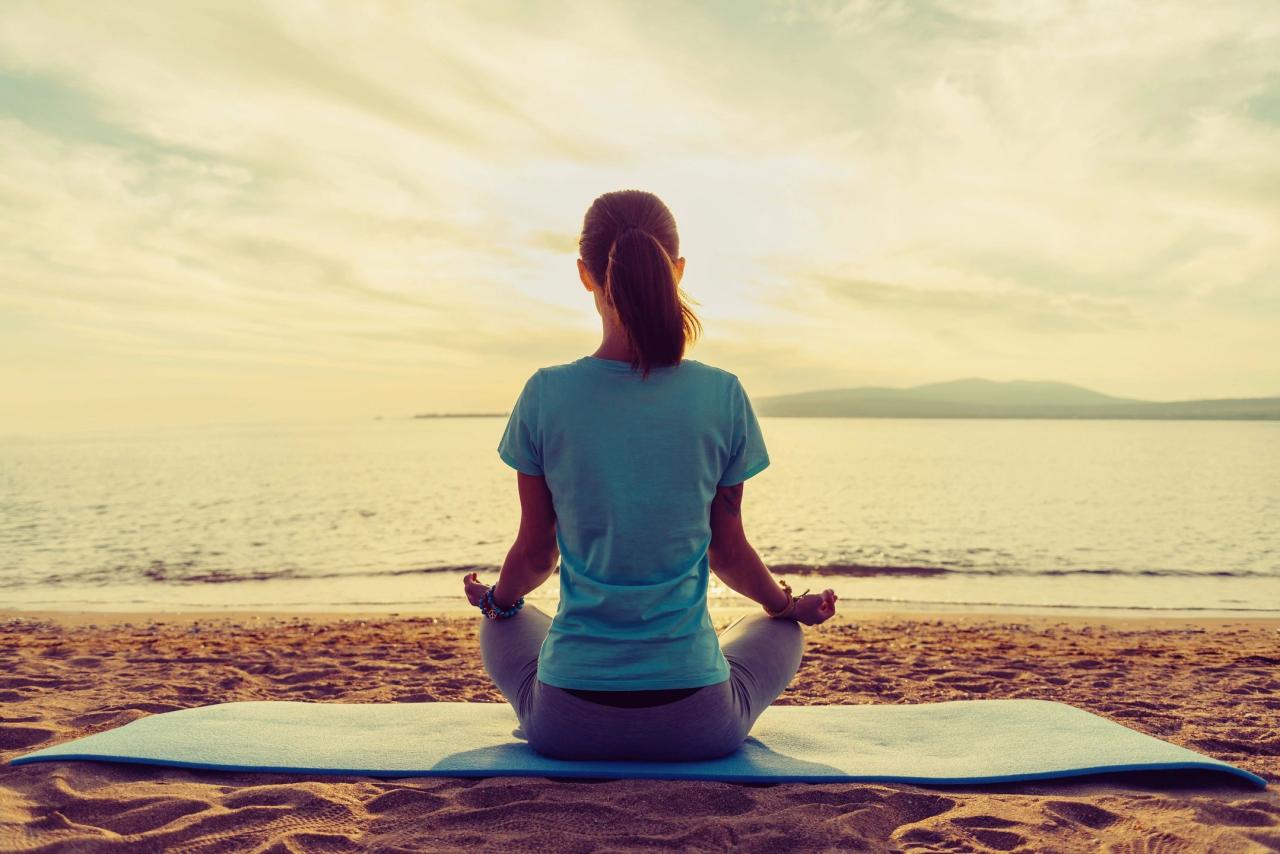
Following a meditation session aimed at unlocking creativity, it is essential to organize and develop the insights and inspirations that have emerged. Properly capturing and structuring these ideas enables ongoing development, fosters clarity, and facilitates sharing your breakthroughs with others. Developing a systematic approach to handling post-meditation insights ensures that spontaneous creative energy translates into concrete projects or artistic expressions.Organizing ideas and inspirations gathered during meditation requires a methodical approach that captures their essence while allowing room for future exploration.
This process involves translating fleeting insights into tangible formats that can be revisited and elaborated upon over time. Whether you prefer digital tools or traditional pen-and-paper methods, maintaining consistency in recording your creative thoughts enhances productivity and sustains your creative flow.
Capturing Creative Thoughts Effectively
To ensure that insights are preserved accurately, establishing templates or structured formats is highly beneficial. These templates should accommodate quick note-taking immediately after meditation and allow for deeper reflection later. Here are some practical options:
For digital formats, consider creating customizable documents or using dedicated note-taking apps. For physical formats, using notebooks with predefined sections helps organize ideas systematically.
| Template Type | Description | Sample Sections |
|---|---|---|
| Digital Template | A structured document or note within apps like Evernote, OneNote, or Notion, allowing for easy editing and multimedia integration. |
|
| Physical Notebook Template | A dedicated page layout with prompts to guide recording of insights directly after meditation. |
|
Using consistent templates ensures that every insight is captured comprehensively, making it easier to analyze and develop later.
Developing Meditation-Derived Insights into Projects or Art
Transforming spontaneous creative insights into tangible outputs involves several deliberate steps. First, review and categorize the ideas based on themes, potential applications, or emotional impact. This categorization facilitates identifying which insights have the most potential for development.To nurture these ideas into projects or artworks, consider the following approaches:
- Create Mind Maps: Visual diagrams connecting related insights to explore how they interrelate and can evolve into larger concepts.
- Set Actionable Goals: Define specific steps, such as sketches, writing drafts, or prototypes, that translate insights into tangible outputs.
- Allocate Dedicated Time: Schedule regular sessions to revisit and develop insights, ensuring they do not remain as fleeting thoughts.
- Collaborate and Seek Feedback: Share your ideas with trusted peers or mentors to refine and expand upon them, fostering new perspectives.
For example, an insight about a visual motif inspired during meditation could evolve into a series of paintings or digital artwork, while a conceptual idea might serve as the foundation for a creative writing piece or a project proposal.
Developing insights into projects requires patience and intentional effort, transforming ephemeral inspiration into lasting artistic or practical creations.
Sharing Creative Breakthroughs with Others
Sharing your insights effectively amplifies their impact and fosters collaborative growth. When presenting your breakthroughs, clarity and context are paramount. Use storytelling techniques to explain the origin of your inspiration, its significance, and your envisioned outcome.Some effective methods for sharing include:
- Creating a Visual Portfolio: Compile images, sketches, or multimedia representations of your insights to present them visually.
- Writing Reflective Summaries: Document your creative process, insights, and development journey in blogs, articles, or presentations.
- Organizing Workshops or Discussions: Share your breakthroughs in group settings, inviting feedback and collaborative refinement.
- Utilizing Digital Platforms: Use social media, dedicated creative communities, or personal websites to showcase your work and connect with like-minded individuals.
Sharing not only garners valuable input but also serves as motivation to continue exploring your creative insights. Emphasizing authenticity and clarity in your communication enhances engagement and fosters supportive networks.
Effective sharing transforms personal insights into communal inspiration, enriching both your work and the creative community around you.
End of Discussion
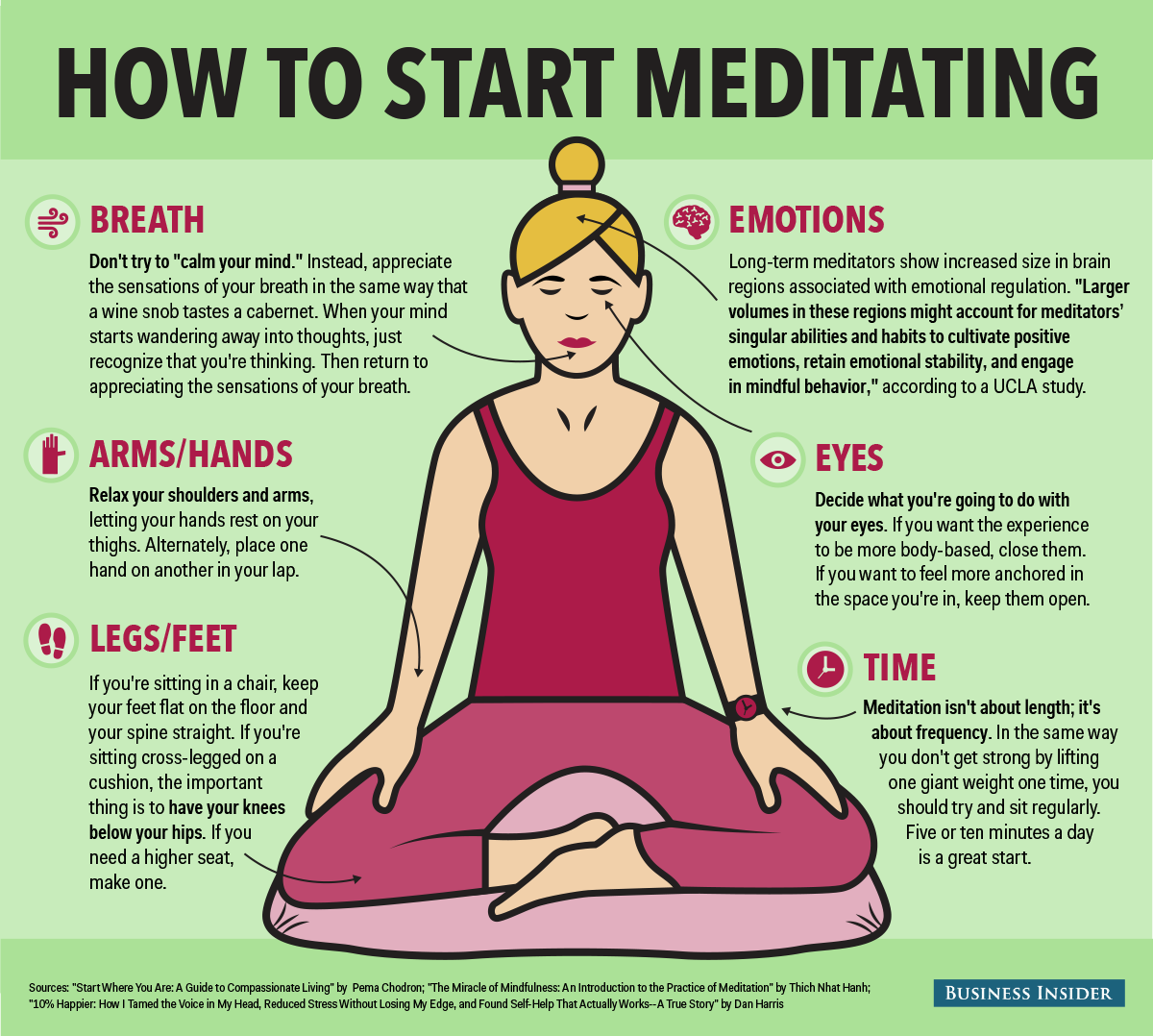
Incorporating meditation into your creative routine not only enhances your ability to generate fresh ideas but also nurtures a sustained sense of inspiration and focus. By establishing dedicated spaces, practicing targeted techniques, and overcoming common hurdles, you can cultivate a mindful environment conducive to continuous artistic growth. Embrace these practices to unlock your full creative potential and turn insights into tangible masterpieces.